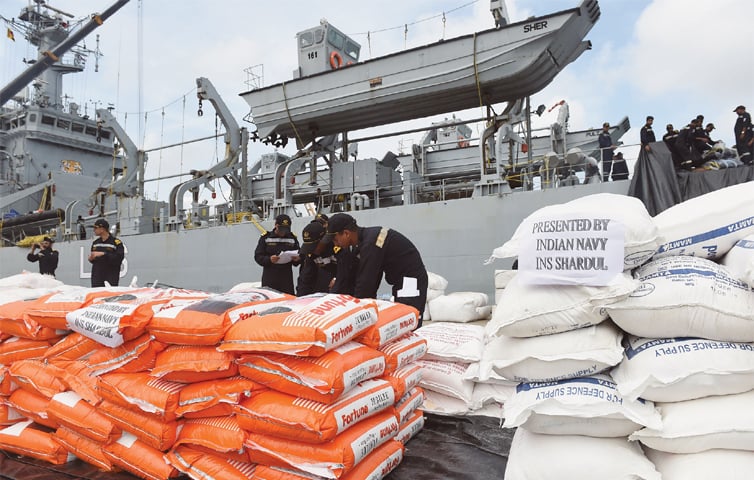COLOMBO: The death toll from Sri Lanka’s flood disaster climbed to 151 on Sunday amidst calls for urgent evacuations as the meteorological department forecast more bouts of adverse weather conditions.
Over 110 people were listed as missing while 52 were injured. In addition, over 114,000 families were in need of urgent assistance.
According to the disaster management centre, 14 districts stand badly affected after heavy rains lashed them on Thursday and Friday. Among the worst sufferers are Galle, Matara and Kalutara districts.
The disaster is being described as one of the worst-ever calamities to have struck the country since floods in 2003.
With heavy rains forecast for early next month, it is feared that the flood and landslide threat might aggravate and affect other districts, especially mountainous regions.
The meteorology department said rains and gusty winds were expected to lash the south-western part of the country this week.
Over the weekend the disaster management centre issued an urgent evacuation warning to residents living on the banks of a swollen river near Colombo. According to DMC, the water level in Kelani River was rising fast, threatening to inundate low-lying areas near the capital. It advised residents to move away from vulnerable areas without wasting time as the flood threat was imminent.
Agencies add
Nearly 2,000 houses were damaged or destroyed. Almost half a million people had been forced from their homes and were sheltering in government buildings or with friends and relatives.
Water levels in Ratnapura, Sri Lanka’s gem district east of Colombo, had subsided but many villages in Kalutara south of the capital were still under water, officials said.
Residents in the south of the island also face the threat of crocodile attacks after a river known for its dangerous wildlife burst its banks overnight.
The charity Save the Children said about a tenth of those displaced were aged below five.
It raised fears of stagnant floodwater becoming breeding grounds for dengue-spreading mosquitos and noted that young children were more vulnerable.
Medical teams were sent to the worst-hit areas to help prevent an outbreak of waterborne diseases.
“We have the expertise to deal with this situation,” Senaratne said, adding cholera and diarrhoea had been successfully prevented in past floods.
The government withdrew an evacuation order for thousands of residents in the southern district of Matara as water levels subsided.
India ships aid

The military has deployed helicopters,boats and amphibious vehicles to distribute aid pouring in from residents in areas unaffected by the floods.
The government appealed for bottled water, new clothes and dry rations for those displaced.
Sri Lanka has also sought international assistance, with India rushing a second naval ship laden with supplies.
The navy vessel Shardul called at Colombo on Sunday with a large consignment of medicines, inflatable boats and medical teams to join the relief operations.
The United Nations said it would donate water containers, water purification tablets and tarpaulin sheets while the World Health Organization will support medical teams in affected areas.
Published in Dawn, May 29th, 2017












































Dear visitor, the comments section is undergoing an overhaul and will return soon.